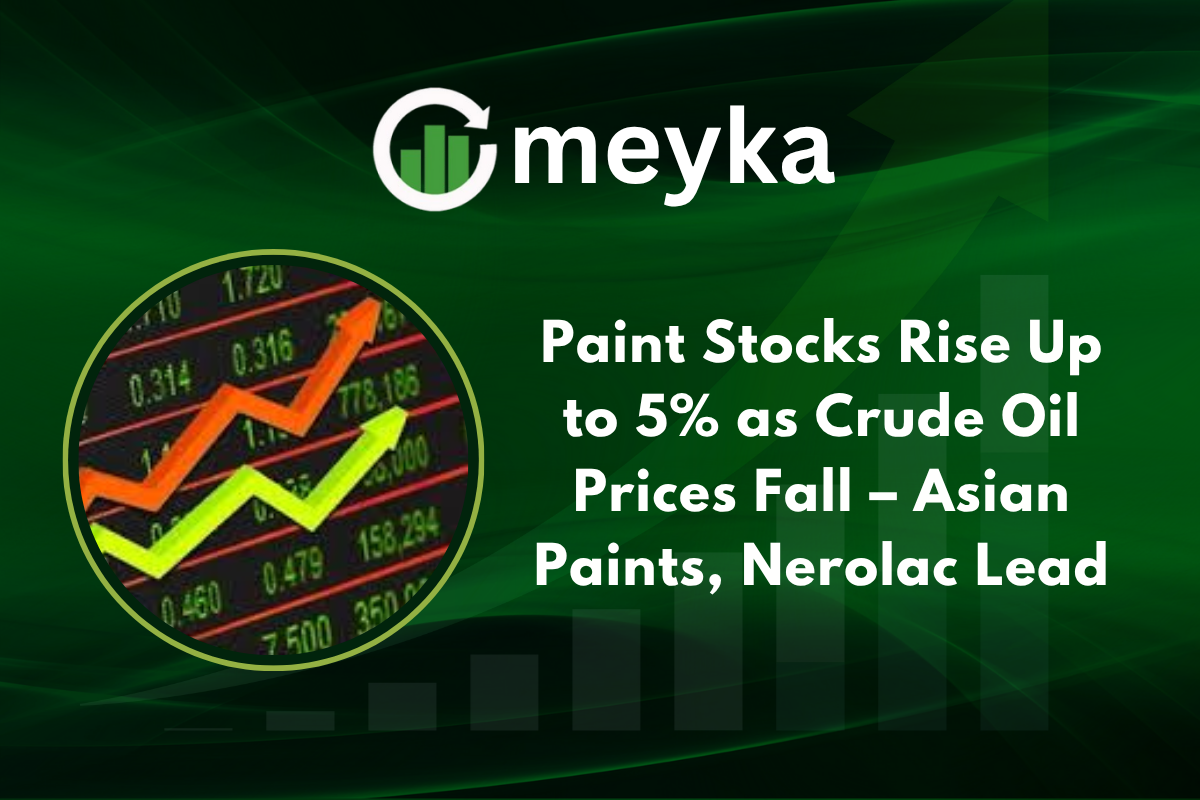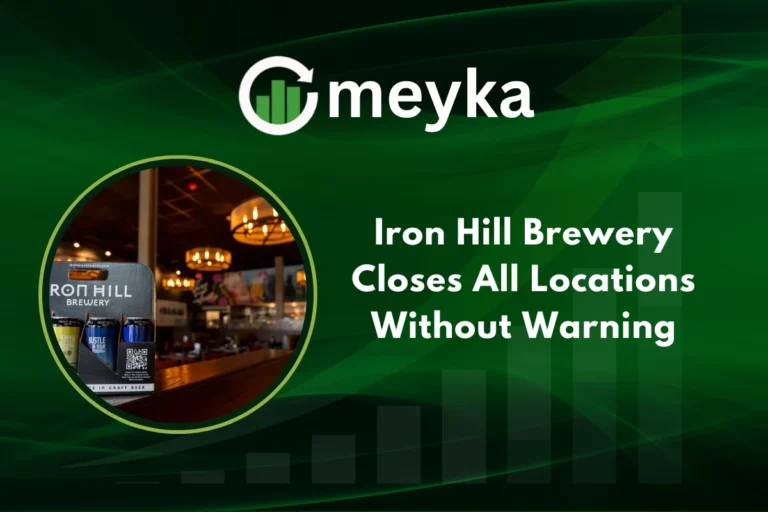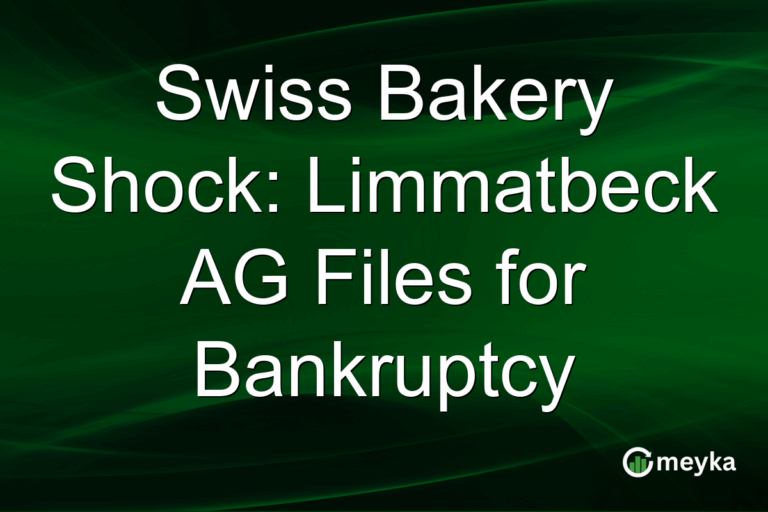Paint Stocks Rise Up to 5% as Crude Oil Prices Fall – Asian Paints, Nerolac Lead
Paint Stocks surged up to 5 percent in Friday’s session, as crude oil slid to multi-year lows. Asian Paints and Kansai Nerolac led the rally, while Berger Paints and Akzo Nobel India also posted solid gains. Investors are betting that lower oil prices will cut resin and solvent costs and that margins will expand in the coming quarters.
Market reports and broker notes point to cheaper raw materials and festive season demand as the main catalysts.
Paint Stocks: Why the move matters now
Crude oil is the feedstock for many paint inputs. When oil prices fall, resins, solvents, and petrochemical derivatives become cheaper. That reduces production costs nearly immediately for large paint makers. Moneycontrol reported that Brent crude touched a three-year low, and paint companies rallied on the news.
Why do falling oil prices help paint companies? Simply: raw material costs form a big slice of paint makers’ expenses, so lower oil prices often mean wider profit margins.
Paint Stocks extend the rally for a third day
This was not a one-day spike. As the Economic Times noted, Asian Paints rose nearly 5 percent, and Kansai Nerolac gained roughly 4.8 percent, as the sector extended gains into a third consecutive session.
Investors expect improved Q3 margins and robust demand ahead of festivals. Broker notes show growing optimism that the input cost tailwind will last at least a quarter, giving companies time to translate lower raw material costs into earnings.
Are these gains sustainable? If oil stays low and seasonal demand holds, the momentum can continue into the next quarter.
Paint Stocks leaders: Asian Paints and Kansai Nerolac shine
Asian Paints led the pack, with strong volume and buyer interest. Livemint highlighted Asian Paints as the top gainer among peers, praising the firm’s distribution reach and pricing power. Investors believe Asian Paints can convert lower input costs into better margins faster than smaller rivals, because of scale and efficient procurement.
Kansai Nerolac also benefited from a similar logic: strong brand, improving mix, and cost control. These qualities amplified the market reaction as crude prices weakened.
Include market color from media: NDTV Profit reported the sector focus and named Asian Paints and Nerolac as leaders in the day’s session.
Analyst view, margins and the math behind Paint Stocks gains
Analysts at Samco estimated that a $10 per barrel fall in crude can expand margins by about 80 to 100 basis points for large paint makers. That is a meaningful swing for a sector with tight operating economics.
Institutional flows into the sector showed confidence that input relief will be visible in near-term results. Technical traders also noted bullish patterns, with many large caps showing strong accumulation.
How much margin improvement is realistic? For big players with scale, a one to two percent margin uptick is plausible if crude stays low and product prices remain stable.
Paint Stocks and the crude oil connection explained
At the macro level, oil fell due to higher inventories and weaker demand outlooks across major economies. Livemint and Moneycontrol cited Brent trading near three-year lows, and linked the drop to inventory builds and softer demand projections.
Lower oil prices cut the cost of solvents and resins, which typically account for a large proportion of paint input costs.
That means companies can either maintain prices and lift margins, or cut prices to gain market share. Both are attractive outcomes for investors watching earnings.
Include market reaction commentary: ET Now tweeted a market snapshot praising the sector as crude slipped.
Broader gains: Berger Paints and Akzo Nobel India also rise
Not all gains were confined to the biggest names. Berger Paints climbed nearly 3.5 percent, while Akzo Nobel India added about 2.8 percent as the oil slide rippled through the inputs chain.
These companies might use the cost relief to boost marketing and distribution ahead of the Diwali and wedding seasons, which typically raise retail paint demand. That planned spending could support volume growth while margins trend higher.
Market sentiment amplified on social platforms: StocktwitsIndia highlighted the sector rally and intraday strength.
Paint Stocks: Technicals and investor sentiment
Technically, the sector showed bullish signs. Brokers flagged positive momentum indicators for major names, and several firms advised accumulating on dips. Retail investors joined institutional flows, sensing a near-term margin recovery play.
Chart watchers cited rising RSIs and improving breadth as signals that the sector could outperform the broader market in the short term.
Is it a time to buy? Many analysts recommend buying selectively, focusing on large, well-managed firms with strong distribution and balance sheets.
Risks and cautions for Paint Stocks investors
While the outlook looks bright, risks remain. Oil prices can rebound if supply tensions reemerge or demand recovers faster than expected. Competition is heating up, with new entrants like JSW Paints investing aggressively.
Also, input cost benefits take a few reporting cycles to flow into margins. Economic Times cautioned that the full benefits may only show in quarterly results. Investors should watch crude trends and company guidance closely.
Final market note from a commentator captured the mood: Vishal Dorge highlighted sector strength and named Asian Paints and Nerolac as names to watch.
Paint Stocks outlook: opportunity with prudence
Lower crude prices provide a clear profit tailwind for paint makers. If oil stays subdued, Asian Paints, Kansai Nerolac, Berger Paints, and Akzo Nobel India stand to gain meaningful margin upside.
Yet investors should balance optimism with caution, watching for oil rebounds and competitive responses. For now, the paint sector colors the market with optimism, as margins and festive demand together brighten the near-term outlook.
FAQ’S
According to market analysts, Asian Paints shares occasionally dip when crude oil prices rise, as it increases raw material costs and squeezes profit margins. Investors say it’s a short-term correction, while Google’s perspective highlights this as part of normal cyclical movement tied to global oil volatility.
Kansai Nerolac shares tend to fall when input costs climb or demand in the housing and auto paint segments slows. According to people, it’s often linked to weak quarterly margins, while Google’s perspective shows this pattern correlates with crude price fluctuations and broader market trends.
Paint Stocks are rising because crude oil prices have fallen, cutting raw material costs and boosting profitability. People see this as a signal of better margins for companies like Asian Paints and Nerolac, while Google’s perspective associates this rally with global oil softness and festive season demand.
Most analysts and investors prefer Asian Paints for long-term investment due to its strong brand, wide distribution, and consistent earnings growth. Google’s perspective also ranks it high in reliability among Paint Stocks, followed by Berger Paints and Kansai Nerolac as steady performers.
Disclaimer
This is for information only, not financial advice. Always do your research.






